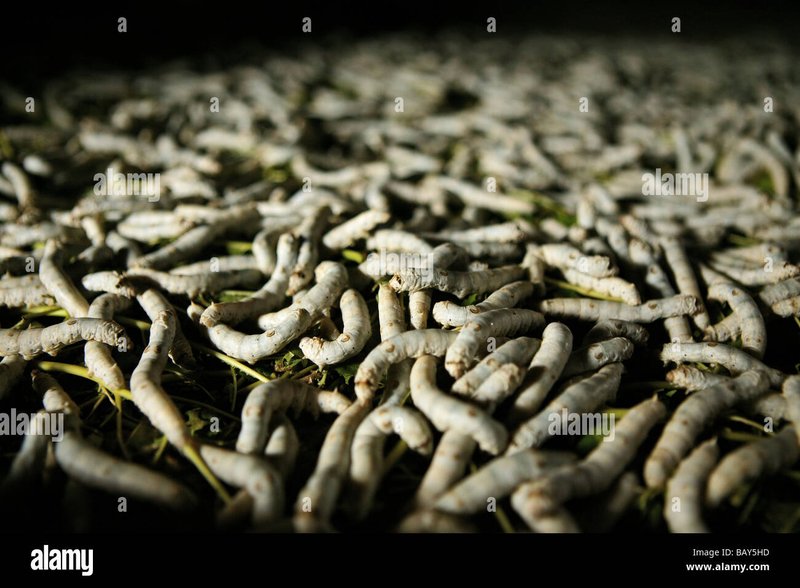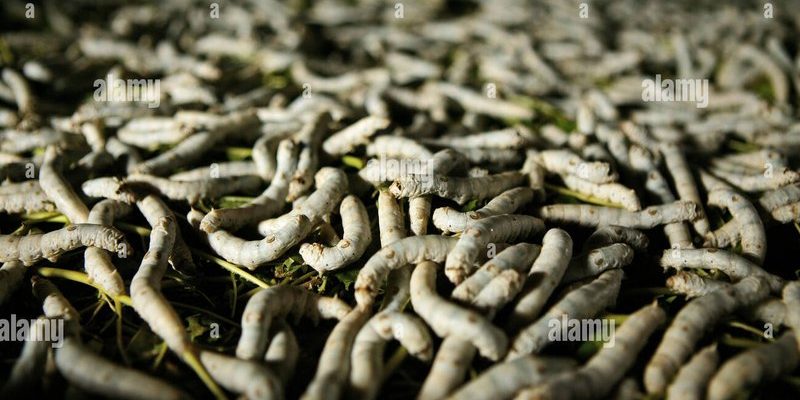
Silkworms belong to the Bombix mori species and have been domesticated for over 5,000 years. Initially, they were revered for their ability to produce silk, a fabric that quickly became a symbol of wealth and sophistication. In many ways, silkworms can be compared to unsung heroes—working tirelessly in the background to create something beautiful and valuable. But their influence goes far beyond just the textile industry. Silkworms intertwine with history, economy, and even spirituality in various cultures throughout Asia. So, grab your favorite cup of coffee, and let’s explore how these small creatures have woven themselves into the very fabric of Asian life.
Silk Production: An Ancient Craft
Silkworms are the **foundation** of one of the oldest textile crafts known to humanity—sericulture. This craft involves cultivating silkworms for silk production, and it can be traced back to ancient China. The process is as delicate as it is intricate. First, farmers raise the silkworms on mulberry leaves until they reach the pupal stage. At this point, they spin their silk cocoons, which will be harvested and processed into silk threads.
Here’s the thing: the entire silk-making journey—from raising the silkworms to weaving the silk—requires a lot of skill and patience. You could say it’s like baking a cake, where each ingredient needs to be measured perfectly for the final product to taste good. In silk production, the temperature must be right, and the right type of mulberry leaves is essential. Once harvested, the cocoons are boiled to extract long silk fibers, which are then spun into threads and woven into beautiful fabrics.
Silk became a **symbol of luxury** and status in ancient societies. It was not just a material; it was a lifestyle. The silk trade routes, famously known as the Silk Road, opened up trade between East and West, sharing not only goods but also ideas and cultures. This exchange made silk a precious commodity that represented both wealth and sophistication.
Silkworms in Asian Culture and Traditions
When you think of silkworms, you might not initially think of culture. However, in many Asian societies, these little critters have ingrained themselves into folklore and traditions. In China, for instance, the story of silk begins with Empress Leizu, who is said to have discovered silk while sipping tea in her garden. This discovery was a turning point, leading to the establishment of silk as a material for the elite.
Moreover, silk clothing has significant roles in various ceremonies and rituals. In many cultures, wearing silk during weddings represents prosperity and good fortune. Often, brides are adorned in traditional silk dresses that signify purity, beauty, and wealth. In some regions, families pass down silk garments through generations, adding sentimental value to the fabric.
Even beyond weddings, silk is integral to festivals and celebrations. During the Lunar New Year, it’s common to wear silk to symbolize new beginnings. This illustrates the deeper connection that silkworms have with joy, hope, and communal celebrations—making them a part of life’s most memorable moments.
The Economic Impact of Silkworm Farming
Silkworm farming, or sericulture, isn’t just an art; it’s also a significant economic driver in several Asian countries. Countries like China, India, and Thailand are at the forefront of silk production, employing millions of people in rural areas. This industry provides jobs and sustains many families, creating a ripple effect in local economies.
In regions like these, you might find entire communities dedicated to the silk industry. Farmers and artisans work hand-in-hand, from raising silkworms to weaving silk fabrics. Imagine a bustling market filled with vibrant silk products—scarves, garments, and home décor—all produced locally. This not only boosts the economy but also promotes cultural pride.
Additionally, silk exports contribute significantly to national incomes. Countries known for high-quality silk can trade it internationally, bringing in foreign revenue. This economic activity helps to sustain various livelihoods and preserve traditional practices, keeping the craft alive. The symbiosis between culture and economy shows how deeply intertwined silkworms are in the fabric of Asian societies.
Health Benefits and Culinary Uses of Silkworms
Believe it or not, silkworms are also recognized for their health benefits. In several Asian countries, silkworm pupae are considered a delicacy and are eaten as snacks or used in dishes. High in protein and rich in vitamins and minerals, silkworms are sometimes regarded as a **superfood**.
In Korea, for example, a popular dish called “beondegi” features cooked silkworm pupae. It’s often enjoyed as street food and provides a unique taste experience. You might be wondering why silkworms deserve a spot on your plate. Well, they are not just a source of protein; they also contain healthy fats that can boost your energy levels.
In traditional medicine, silkworms are believed to have various health benefits, such as strengthening the immune system and even aiding in certain skin conditions. This showcases the multifaceted role that silkworms play—not just in creating fabric but also contributing to culinary traditions and health.
Environmental Considerations of Silkworm Farming
As with any agricultural practice, **environmental considerations** play a crucial role in silkworm farming. Traditional sericulture is often viewed as more eco-friendly when compared to synthetic fabric production. Silkworms feed on mulberry leaves, which grow naturally in many regions, and they don’t require harmful chemicals or pesticides.
However, it’s worth noting that large-scale operations can lead to deforestation and other environmental challenges. As the demand for silk grows, so does the need for sustainable farming practices. Many countries are beginning to adopt more environmentally friendly methods to balance the economic benefits with ecological responsibility.
For consumers, choosing sustainably produced silk can make a difference. More brands are emerging that focus on ethical production methods, ensuring that silkworms are raised in humane conditions. Supporting these initiatives helps promote a healthier planet while still enjoying the luxury of silk.
The Future of Silkworms in a Globalized World
As we look ahead, the future of silkworms is intertwined with globalization and technological advancements. While some might assume that modern fabrics would push silk out of the market, there’s a growing appreciation for natural materials in today’s fashion industry. People are becoming more conscious of their choices, leaning toward sustainable and ethically sourced products.
Emerging technologies are also impacting silk production. Innovative farming techniques, along with advancements in biotechnology, are helping farmers increase yields while reducing environmental impact. This is a win-win situation, as it preserves the traditional craft while meeting modern demands.
Furthermore, cross-cultural exchanges are influencing silk fashion worldwide. Designers are experimenting with silk in unique and contemporary ways, showcasing its versatility. As the world becomes more interconnected, silkworms may continue to inspire creativity and innovation while keeping their rich cultural significance intact.
In conclusion, silkworms are not just humble insects but are deeply woven into the cultural, economic, and social fabric of Asia. From ancient history and traditions to modern sustainable practices, their significance is undeniable. So, the next time you see a beautiful silk garment or enjoy a delicious dish featuring silkworms, remember the rich history and cultural heritage they represent. It’s remarkable how something so small can have such a profound impact on our lives!

